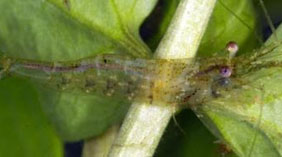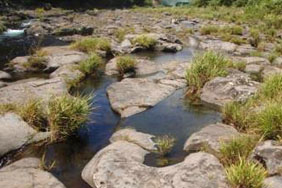|
With the exception of Antarctica, freshwater shrimps are present in all the main biogeographical regions. A total of 763 freshwater species are presently known. China has the highest number of freshwater shrimp species (159), followed by Indonesia (116), India (77), Philippines (58), Mexico (48), Malaysia (48) and Madagascar (40). Freshwater shrimps occupy various types of habitats including lakes, rivers, streams, rain pools, and caves.
Their roles in nature
Freshwater shrimps and their ecological services are mostly unknown to the general public and policy makers. However, they have an important role in cycling nutrients and controlling nutrient outflows from ecosystems. They transform organic detritus from sedimentary storage into dissolved nutrients that can be mixed into overlying waters and used by rooted plants and algae (phytoplankton). For example, two shrimp species from Puerto Rica are known to play a significant role in leaf-litter decomposition in forest streams. Those shrimps are clearing pools of all naturally occurring leaf litter. Freshwater shrimps often dominate the biomass of tropical island streams and are known to have strong effects on stream ecosystem structure and function. Some species are omnivores and feed on macrophytes, algae, and zooplankton. Further, shrimps are consumed by many other species like birds.
Extinct shrimps
Two species are known to be extinct. The Californian Syncaris pasadenae used to be found in streams in Los Angeles areas and Macrobrachium leptodactylus in Java, Indonesia which has not been observed in the wild despite numerous surveys. Further, ten species are possibly extinct, and almost one third of species are either threatened or Near Threatened.
Threats
Nearly 28% of the world’s freshwater shrimp species are threatened with extinction. Freshwater shrimps faces many threats similar to many other species which include harvesting for the aquarium trade due to their attractive color pattern (Caridina), introduction of invasive fishes, pollution, and habitat degradation and destruction. Water pollution is a significant threat for many species. For example, two shrimp species (Macrobrachium madhusoodani and M. prabhakarani) recently reported from Kerala (India), are now classified endangered due to the increased water pollution in rivers.
Habitat degradation and destruction play a significant role in the decline of freshwater shrimps. For example, wetlands are a major habitat for many species, and long-term loss of natural wetlands averages may have been as high as 87% since 1700s with a loss of 64–71% of wetlands since 1900s. Cave shrimps are also particularly vulnerable to human impacts. Caves are threatened by groundwater extractions, water contamination, and excessive siltation.

|
|

A New Zealand freshwater shrimp (Paratya curvirostris) © Paddy Ryan

Endemic and endangered freshwater shrimp from Jeju Island, South Korea © Endangered Species International

Habitat of the Jeju Island Shrimp, South Korea © Endangered Species International

Endemic freshwater shrimp from the Philippines © Endangered Species International
|









